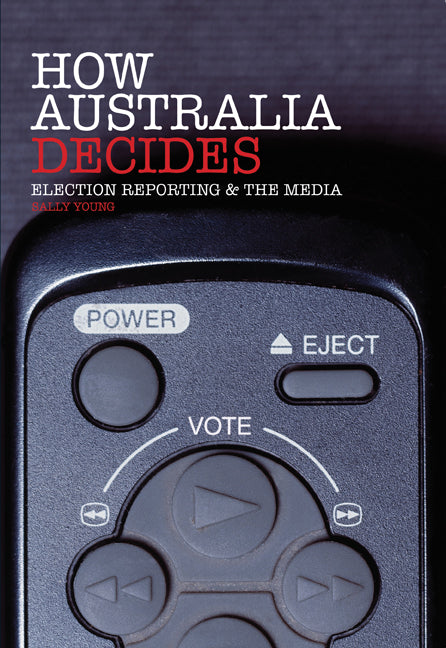Freshly Printed - allow 4 days lead
Couldn't load pickup availability
How Australia Decides
Election Reporting and the Media
Puts allegations over the Australian media's recent reporting of politics and election campaigns to the test.
Sally Young (Author)
9780521147071, Cambridge University Press
Paperback, published 1 December 2010
346 pages
22.8 x 15.3 x 2 cm, 0.54 kg
'Sally Young's excellent book not only clearly and compellingly addresses the major issues in media coverage of election campaigns, but for anyone interested in Australian politics in the early part of the 21st century, it offers a treasure trove of fascinating material.' Rodney Tiffen, University of Sydney
In recent years, the Australian media have come under fire for their reporting of politics and election campaigns. Political reporting is said to be too influenced by commercial concerns, too obsessed with gossip and scandal, and too focused on trivia and 'sound bites' at the expense of serious issues. There are accusations of bias, sensationalism, 'lazy' journalism and 'horse-race' reporting that is obsessed with opinion polls. How Australia Decides is the first book to put these allegations to the test. Based on a four-year empirical study, Sally Young reports the results of the only systematic, historical and in-depth analysis of Australian election reporting. This groundbreaking book shows how election reporting has changed over time, and how political news audiences, news production and shifts in political campaigning are influencing media content – with profound implications for Australian democracy.
Preface
1. Election reporting in the 2000s
Part I. Political News Audiences and Outlets: 2. The political news audience
3. The elite public sphere
4. The popular public sphere
5. Elections and audiences
Part II. Where Does Election News Come From and What is it About?: 6. Creating election news: journalists
7. The stars of the show: politicians and campaigning
8. Who controls the news agenda? 9. 'From the campaign trail': the framing of election news
Part III. Elections in Mediated Times: 10. News, political reporting and the Internet
11. Bias
12. News, the public and democracy.
Subject Areas: Media, information & communication industries [KNT], Political structures: democracy [JPHV], Politics & government [JP], Media studies [JFD]


